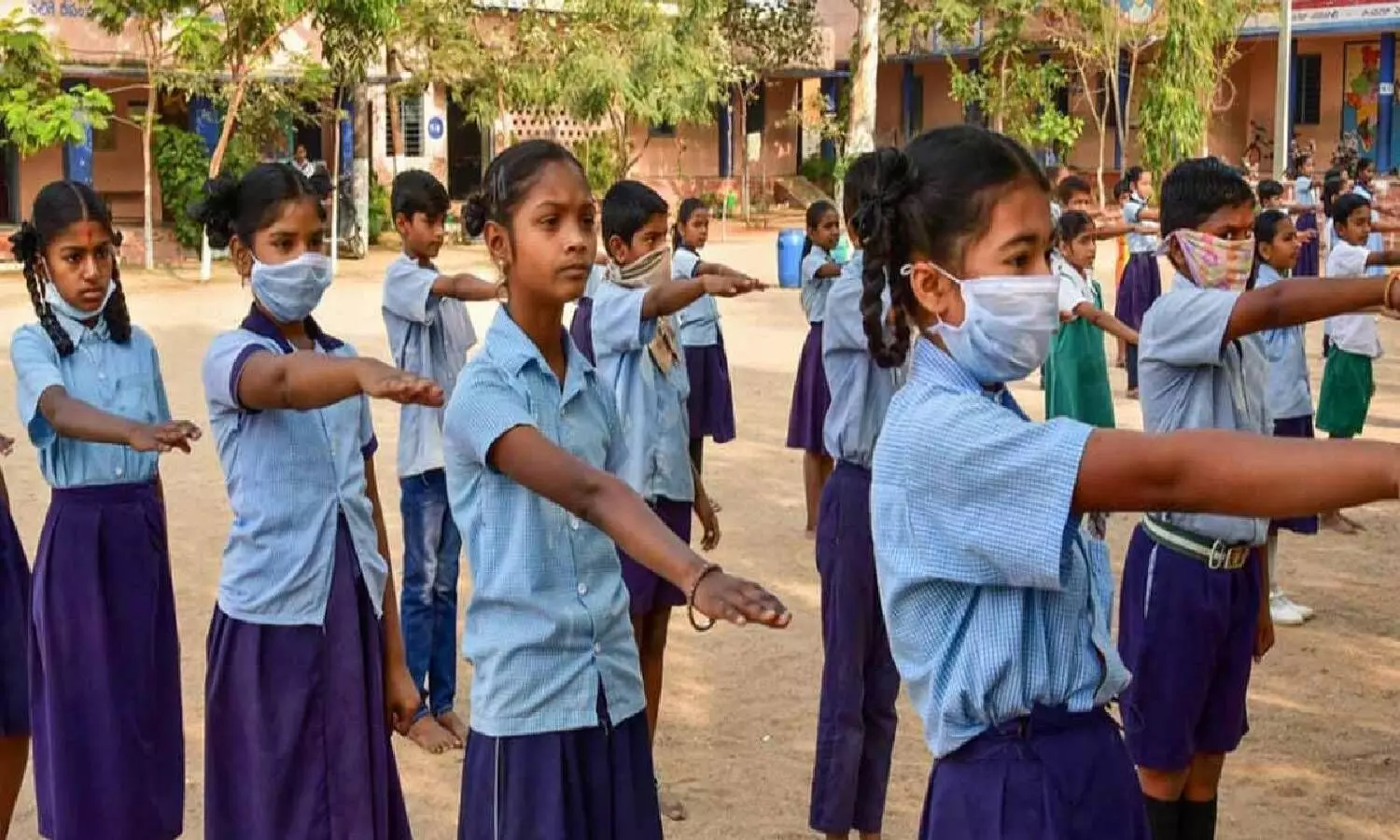Why has upper primary level dropout rate increased in TS despite good pupil-teacher ratio?
In 2021-22, the dropout rate drastically increased from 0 to 3.1. Both among boys and girls, there has been an increase in dropout rates in upper primary classes from 2018-19 to 2021-22.
By Nimisha S Pradeep
Hyderabad: A new survey has revealed that the dropout rate at the upper primary level (Classes 6 to 8) in Telangana has increased in 2021-22.
An analysis of UDISE+ data by Child Rights and You (CRY) has revealed that in 2018-19, the total dropout rate in upper primary classes was 2.9. In 2019-20, it dropped to 0.1 and later it fell to 0. But in 2021-22, the dropout rate drastically increased from 0 to 3.1. Both among boys and girls, there has been an increase in dropout rates in upper primary classes from 2018-19 to 2021-22.
UDISE+ or the Unified District Information System of Education plus provides data about various indicators of education across the country. Recently, the CRY analyzed their data from 2018-19 to 2021-22 and made some observations about the education system in Telangana during these four years.
The analysis mainly focused on five indicators- the number of schools, enrolments of students, gross enrolment ratio, dropout rate, and pupil-teacher ratio among the different levels of education namely Primary (1 to 5), Upper Primary (6-8), and Secondary (9 and 10).
The dropout rate is the proportion of pupils from a cohort enrolled in a given level at a given school year who are no longer enrolled at any grade in the following school year.
However, in primary classes, this is not the case. According to CRY data, the dropout rate has become nil in primary classes in these four years. In secondary classes, there is a slight increase in the total drop rate from 13.5 to 13.7 over the four years.
Whereas in India, over four years, there has been a significant decrease in dropout rates at all levels. In 2018-19, the total dropout rate in secondary classes was 17.9 which was reduced to 12.6 in 2021-22. In primary classes, the dropout rate fell from 4.5 to 1.5 and in upper primary classes, it decreased from 4.7 to 3.
Number of schools
The number of schools has been increasing in Telangana according to the analysis. The total number of schools in the state increased from 42,355 in 2018-19 to 43,083 in 2021-22. Except in primary classes, all other levels of education showed an increasing trend in the number of schools.
Gross enrollment ratio
The gross enrolment ratio compares the enrolment in a specific level of education to the population of the age group which is the most appropriate age for that level of education. In Telangana, GER has improved in every level of school education and across gender.
Pupil-Teacher Ratio
The pupil-teacher ratio is the ratio between the number of students and the number of teachers for that set of students. "If the PTR reduces, it indicates that the number of students per teacher has reduced implying more focus of teacher on students resulting in improving the quality of education," notes CRY.
Telangana has a PTR of 22, better as compared to India which has a PTR of 28. According to CRY analysis, Telangana has the best PTR when compared with three of the other southern states namely Tamil Nadu, Karnataka, and Andhra Pradesh.
"In Telangana, there has been a slight improvement in enrolment at higher secondary level education between 2020-21 and 2021-22 in the state, highlights a comparison of the two years UDISE+ report. However, the state has witnessed a decline in total enrolment from 69.64 lakh to 69.15 lakh between 2020-21 and 2021-22. Also, the analysis reveals that the dropout rate has increased in the upper primary level of school education and decreased in the secondary level of education in a similar period, especially in girls (13.4 to 12.9)," said John Roberts, Regional Director, South, CRY
"If we look at infrastructure, the recently released UDISE+ 2021-22 report finds that there are 8980 schools (21.2%, second highest after Assam) with non-functional girls' toilets. Infrastructure along with improvement in the number of schools must be given equal priority so that children do not have to miss school or drop out due to lack of access to necessities that would take their focus away from education."